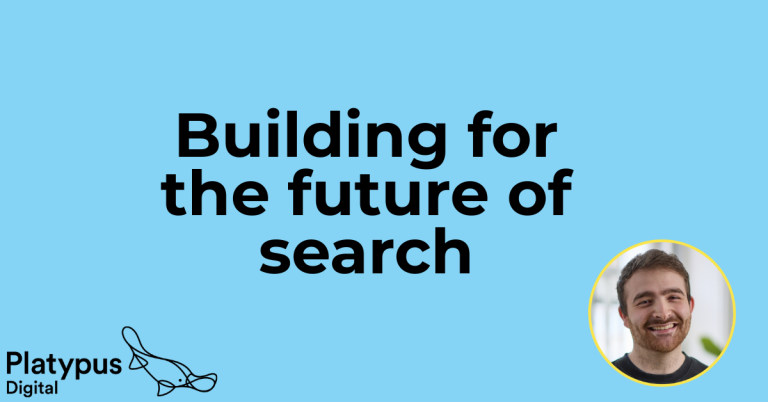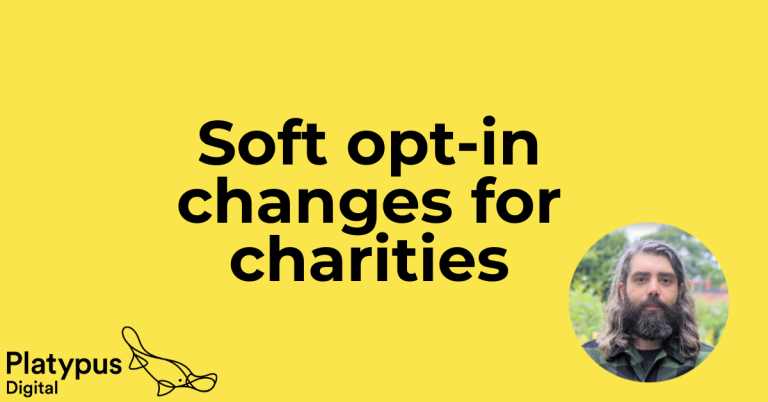This is a guest post by Rebecca Brewer, Digital Marketing Manager at Dementia UK.
In 2017 Glyn Thomas wrote a brilliant blog that pretty much shook the sector for those of us working in email marketing.
He signed up to 100 charity email lists to see what he could learn and share about charities’ email marketing. He found that most charities miss the critical onboarding window, email deliverability depends on design choices and that charity email content is too donation-focused.
So 8 years on I wanted to build on the experiment, to find out if our sector’s approach to email has changed.
My methodology
I don’t quite have the same stamina as Glyn, so I signed up to 60 charities instead of 100.
To try and get myself onto the email lists, I checked charities’ homepages, internal search bars and used Google to try and find how to sign up.
After signing up, I recorded what each charity sent to me in the month after signing up, as well as the frequency of sends in this time.
The charities I signed up to were mainly medium to large charities, with a few small charities thrown into the mix too.
So without further ado, here is what I found.

It’s surprisingly hard to sign up to charity email lists
Out of 60 charity email lists I tried to sign up to, there were 10 charities that I couldn’t find any way to sign up to their email list. Interestingly, most of these were in the large charity category.
That’s 16% of charities I wasn’t able to sign up for emails from (presumably without having done an action first like making a donation or signing up to an event). When doing his similar research, Glyn found he was unable to sign up to 13 charities out of 100.
Maybe for these charities, this is part of the strategy – only emailing people who have actively already taken an action for your cause. But I’d bet my bottom dollar lots of these charities are also running paid advertising for lead generation to widen their email lists.
With Meta making life increasingly difficult for digital marketers in our sector, making sweeping changes that cause catastrophic outcomes, capturing first party data needs to be part of your wider digital marketing strategy. Not to mention the huge changes we’re sure to see with the soft-opt in coming in 2026. Knowing who is a warm supporter and who is someone you’ve found using legitimate interest will also be vital for your wider strategy when this comes into place.
Charities don’t send enough emails
Of the 60 email lists I signed up to, 23 sent me zero emails in the first month.
Of these 23 charities, only six of them sent emails after that first month.
So 17 charities actually sent me nothing at all. That indicates a big broken data process for email sign ups via those charities’ websites.
Back to the charities that did email me – the number of emails I received in month 1 (not including automatic bounceback emails after signing up) ranged from 1-9 emails across charities.
The most common number of emails throughout the month per charity was three.
The kinds of emails I received
Newsletter
The newsletter format still seems to remain supreme as this was the email format I received most frequently throughout the month.
Something to note with this is that the newsletter format emails came from 7 of the total 27 charities only. Other charities opted for single action email sends.
Engagement and surveys
The second most frequent email type I received was engagement, i.e. anything a charity was asking me to do that required action on my part that wasn’t a financial, campaigning or full survey ask.
Here’s one from Prostate Cancer UK.

Emails using this format type also included:
- quizzes
- ‘Share on social media’ asks
- preference questions
- short one-answer surveys
- videos
I counted survey emails in their own category, as they asked for more in-depth information. I received 8 survey emails across the month and one of these emails asked me to rate the support I had recently received from their support service – which I hadn’t used!
Donation
Donation asks were the third highest type of email I received.
These emails came from 11 different charities.
While I only received 7 emails encouraging a purchase from a shop, 6 of these emails were all from the same charity.
Re-engagement
I also started to receive re-engagement emails from one charity one day after signing up to their email list.
This included emails saying “we miss you” and asking me to update my contact preferences or to unsubscribe if I was no longer interested in receiving emails from them.
This is a good reminder for all of us to check our re-engagement program entry requirements.
More charities are trying to build relationships
In his original blog 8 years ago, Glyn mentioned “I did not have the impression that many organisations were trying to build a relationship or have a dialogue with me”.
I think this is the most significant change for charities’ approach to email in the time since that was published. From the content I received, it really did feel like the charities were building a picture of their organisation and how I could be part of it.
Maybe in part thanks to Glyn’s blog post, we’ve come a long way in crafting welcome journeys that contain a mixture of content types and focus on building relationships with supporters.

Asking about my connection to their cause
Throughout my email experiment only eight charities asked for my connection to their cause, either at sign up or in the email journey.
Given the vast amount of noise over the past few years on personalisation in email marketing, both across our sector and outside, I expected more charities would ask this.
Of the emails I received from the 8 charities that did ask for my connection, none of the emails referenced this connection in the copy or content of the emails they sent.
And in fact some of the charities continued to ask for my connection to cause, even though I’d already told them. All this says to supporters is “we care sort of, but not enough to act on what you’re telling us”.
I know that some charities may collect this to inform data on who they’re reaching or might to determine certain journey routes.
But asking for it at all sets an expectation that it will be used to improve the supporter experience. So it should be felt and seen for supporters who give you this information, whatever route they come to you.
Charities working in siloes
Having worked in the sector now for over 10 years, I would bet that the reason behind this largely comes down to siloed communication planning.
I’m sure that in most charities email journeys are mostly product based, and probably are built using more of this connection to cause data.
But supporters who sign up to emails on your website should not be forgotten. They deserve a fantastic experience too because they either really need your help or they’re really keen to support you.
The six things you should do to improve your charity’s email marketing
- Add your email sign up form to your website and make it easy enough to find. It’s a total no-brainer.
- Check your data process for email sign ups to your CRM and to your email platform, to avoid the trap of warm contacts ending up in the digital void. People who have told you they want to hear from you should hear from you, and quickly.
- Check all the routes of entry for your welcome journey and make sure the content works for all of these routes. This will help you steer clear of things like asking people for feedback on services they haven’t used.
- If you run a re-engagement program, make sure the entry requirements take into account the date the person signed up or was added to your email platform, so contacts are not being flagged as in-active right after signing up.
- If you know that your supporters have different user needs based on attributes like their connection to your cause, make sure you are collecting and using this in all of your onboarding journeys (not just product based journeys!). Take a look at your journeys and consider, are there any touchpoints where you could reference their connection to cause, or change the types of emails they’re receiving based on this?
- And remember, if you are asking people to share this information, make sure your journeys take into account who has already given you this, so you don’t ask them for it again.





